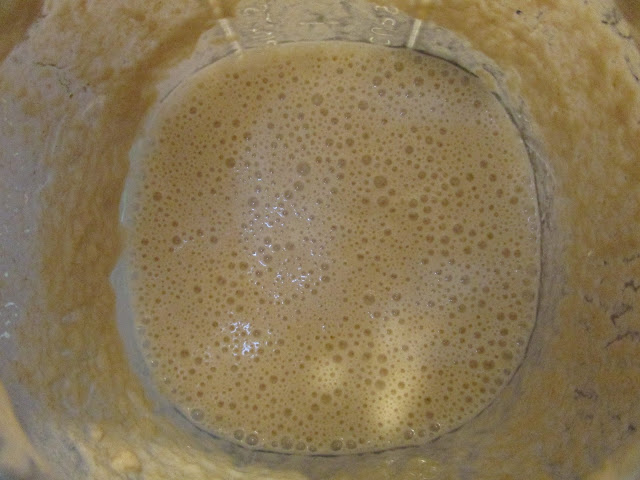The first loaf of
sourdough bread I made tasted good covered in melted cheese—in the way I
imagine cardboard would taste good covered in melted cheese. My sourdough bread
was dry, crumbly, flavorless, and barely edible.
What went wrong? I have a
few ideas, but before I share my hypothesis for the Great Bread Failure, let me
explain what exactly sourdough bread is.
Bread is leavened with
yeast—a microscopic fungus which breaks down carbohydrates in flour and
releases carbon dioxide and ethanol as byproducts. The carbon dioxide released
by the yeast fills the bread dough with gas and makes the dough rise, giving
the bread the fluffy texture we expect.
Most bread we make and
eat today is leavened with dried baker’s yeast—Saccharomyces cerevisiae—a yeast species specifically bred for its
leavening capability. S. cerevisiae isn’t
the only yeast that can leaven bread. Wild yeasts growing on food and on practically
every other surface can also be used to make bread—if we can catch them.
A sourdough starter, simply
made of flour and water, is the way people harnessed the power of wild yeasts
for centuries. This starter is used in place of dry yeast to make bread. Or, I
should say dry yeast is used in place of a sourdough starter, as dry yeast is a
fairly recent invention and originally all breads were sourdough.
 |
| My bubbling sourdough starter. The bubbles are carbon dioxide being released by the yeast. Photo by blog author. |
The water in the
sourdough starter prompts flour enzymes to break down starches in the flour
into carbohydrates that yeasts can digest. The yeast naturally found in the
flour begin to ferment these carbohydrates and release carbon dioxide, ethanol,
and a variety of other byproducts, including B vitamins and organic acids.
The yeasts in the
sourdough starter are joined by lactic acid bacteria, a type of beneficial
bacteria which lives on food and in soil. The lactic acid bacteria also ferment
carbohydrates in the flour, but the main byproducts they produce are lactic and
acetic acid. Lactic acid bacteria are responsible for the “sour” in sourdough. (To
learn more about lactic acid bacteria check out my blog post on vegetable
fermentation.)
Once a sourdough ferments
for about a week, it is ready to be used to make delicious sour bread.
Or in my case,
not-so-delicious bread. My sourdough didn’t even taste sour!
The sourdough recipe I used
called for baking soda, another leavening agent mainly used in quick breads. Baking
soda reacts with acid to release the carbon dioxide which allows the bread to
rise, but during the reaction the acid is neutralized. When I mixed baking soda
with my sourdough starter, it fizzed like a baking-soda-and-vinegar volcano
releasing copious amounts of carbon dioxide. While the baking soda helped my
bread rise faster, it also neutralized all the tasty lactic and acetic acid in
the dough, leaving my concoction decidedly un-sour and un-tasty.
 |
| Baking Soda. Photo by blog author. |
The baking soda explains
why my bread wasn’t sour, but not why it was so dry and crumbly.
When I was making my
sourdough, I got a little carried away with adding whole-wheat flour.
Whole-wheat flour is very healthy, but the bran in it soaks up lots of water—more
water than I accounted for. Since I didn’t add enough water to the dough I
ended up with dehydrated and unappetizing bread.
Despite my struggle with
my first sourdough attempt, I was determined to try again, and sourdough take
two turned out wonderfully! I did not use baking soda and I used a mixture of
both whole-wheat and white flour to avoid the dehydration problem.
Why was I so determined
to repeat the sourdough experiment? One reason is because well-done sourdough
is delicious and has many health benefits, but the reason I really am
interested in sourdough is the dynamic and little-known relationship between
the yeast and lactic acid bacteria in the sourdough starter. More on that
relationship in my next post!


